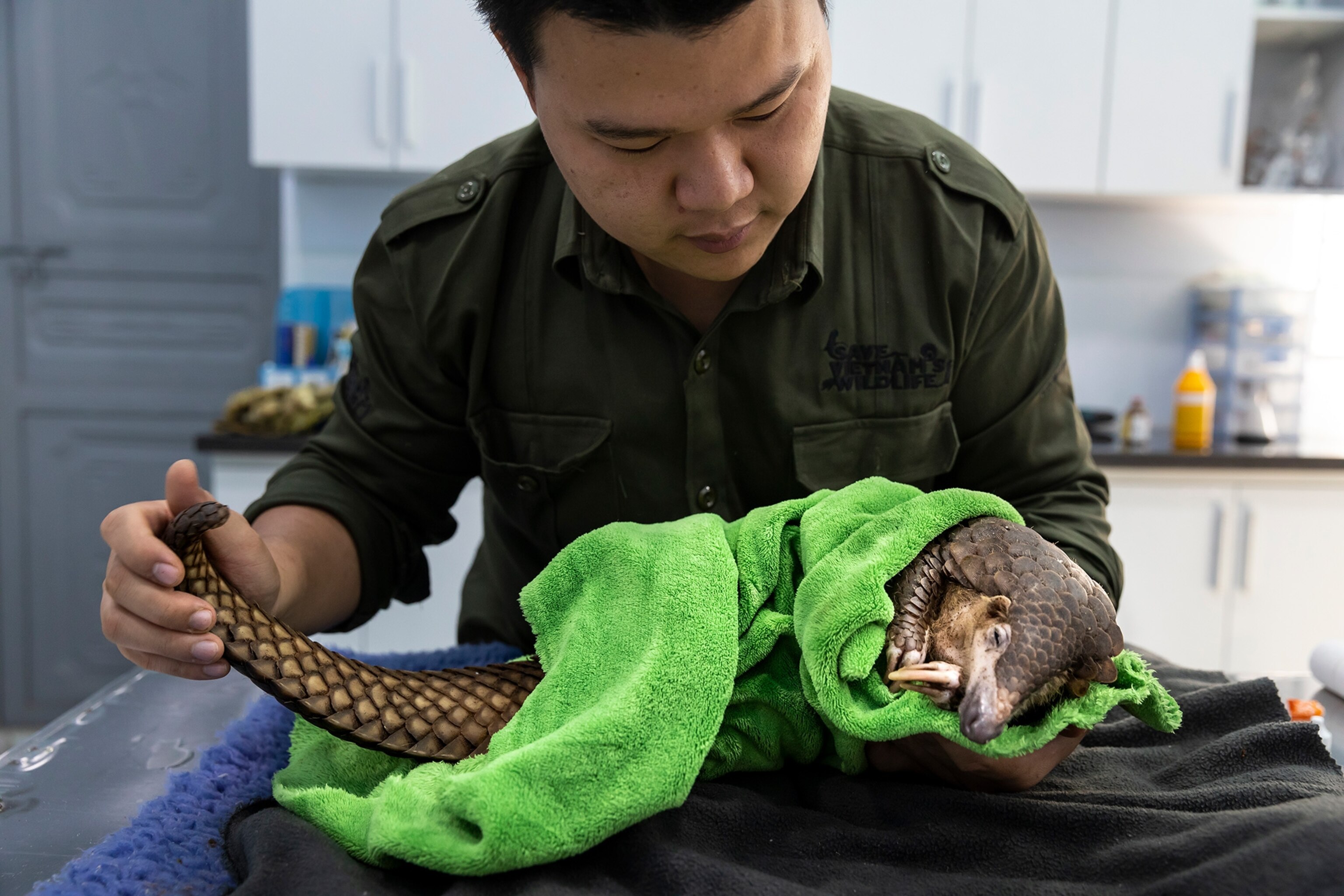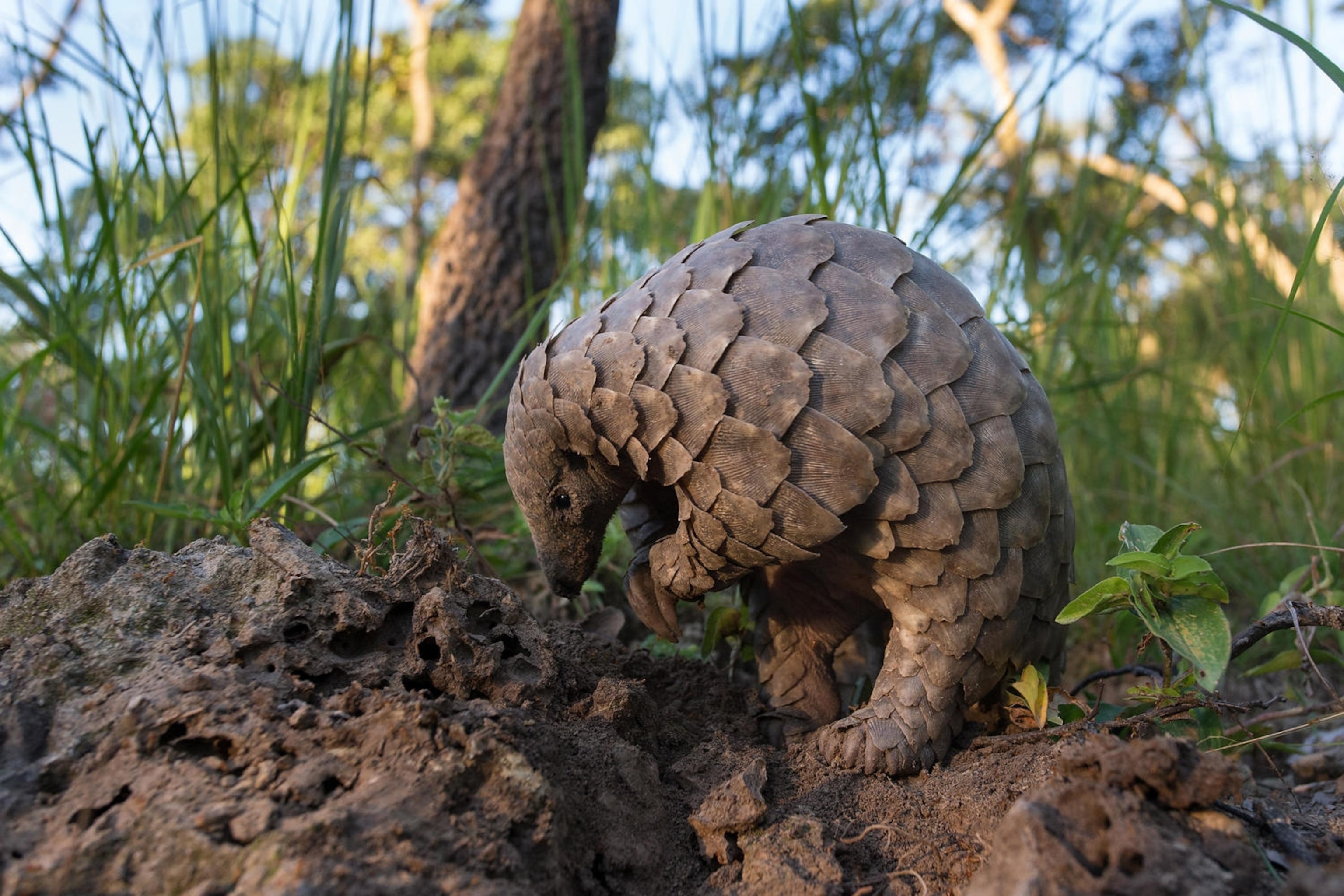











12 photos show the adorable pangolin in all its glory
Meet the pangolin—an animal unlike any other on Earth.
They look like reptiles, all covered in scales. They look like armadillos, the way they roll up in a ball. They look like anteaters, with those long snouts and tongues. And they look like dinosaurs, lumbering and ancient.
Pangolins are unlike any other animal I’ve ever seen. They’re distantly related to bears and dogs, but they’re in their own taxonomic family. And they’re mammals—the world’s only mammal with real scales.
But when I met pangolins for the first time in real life, what surprised me most was their personalities. Tamuda was bold and stubborn. Luleko was shy and sweet. Both had been rescued from the illegal wildlife trade in Zimbabwe and were recovering in the care of the Tikki Hywood Foundation, a nonprofit organization dedicated to wildlife rescue and conservation. Pangolins are among the most widely poached mammals—their scales are in demand for use in traditional Chinese medicine.
When I looked into their eyes, it seemed that they were thinking no less about me than I about them.
I followed Tamuda and Luleko for hours as they wandered around the Tikki Hywood rehab center. Each pangolin had a human caregiver who helped them look for ants and termites to eat. Sometimes the pangolin would take a sniff, decide that the anthill or termite mound wasn’t right, and move on. Other times, he would use his big claws to pile in head first, leaving only a tail wiggling above ground as he feasted on the insects below.
Another thing I learned about pangolins during that visit was that these guys—Temminck’s ground pangolins—like to roll in manure. We watched one go at it for at least 10 minutes. I’m not sure I’ve ever seen an animal appearing to enjoy itself that much. Lisa Hywood, the founder and director of Tikki Hywood Foundation, says they do it to get rid of parasites. Like taking a mud bath.
For more about pangolins, check out this story from National Geographic magazine. In the meantime, happy World Pangolin Day: Enjoy these photos showing pangolins in all their adorable glory.
You May Also Like
Go Further
Animals
- This ‘saber-toothed’ salmon wasn’t quite what we thoughtThis ‘saber-toothed’ salmon wasn’t quite what we thought
- Why this rhino-zebra friendship makes perfect senseWhy this rhino-zebra friendship makes perfect sense
- When did bioluminescence evolve? It’s older than we thought.When did bioluminescence evolve? It’s older than we thought.
- Soy, skim … spider. Are any of these technically milk?Soy, skim … spider. Are any of these technically milk?
- This pristine piece of the Amazon shows nature’s resilienceThis pristine piece of the Amazon shows nature’s resilience
Environment
- This pristine piece of the Amazon shows nature’s resilienceThis pristine piece of the Amazon shows nature’s resilience
- Listen to 30 years of climate change transformed into haunting musicListen to 30 years of climate change transformed into haunting music
- This ancient society tried to stop El Niño—with child sacrificeThis ancient society tried to stop El Niño—with child sacrifice
- U.S. plans to clean its drinking water. What does that mean?U.S. plans to clean its drinking water. What does that mean?
History & Culture
- Meet the original members of the tortured poets departmentMeet the original members of the tortured poets department
- Séances at the White House? Why these first ladies turned to the occultSéances at the White House? Why these first ladies turned to the occult
- Gambling is everywhere now. When is that a problem?Gambling is everywhere now. When is that a problem?
- Beauty is pain—at least it was in 17th-century SpainBeauty is pain—at least it was in 17th-century Spain
- The real spies who inspired ‘The Ministry of Ungentlemanly Warfare’The real spies who inspired ‘The Ministry of Ungentlemanly Warfare’
Science
- Here's how astronomers found one of the rarest phenomenons in spaceHere's how astronomers found one of the rarest phenomenons in space
- Not an extrovert or introvert? There’s a word for that.Not an extrovert or introvert? There’s a word for that.
- NASA has a plan to clean up space junk—but is going green enough?NASA has a plan to clean up space junk—but is going green enough?
- Soy, skim … spider. Are any of these technically milk?Soy, skim … spider. Are any of these technically milk?
- Can aspirin help protect against colorectal cancers?Can aspirin help protect against colorectal cancers?
Travel
- What it's like to hike the Camino del Mayab in MexicoWhat it's like to hike the Camino del Mayab in Mexico
- Is this small English town Yorkshire's culinary capital?Is this small English town Yorkshire's culinary capital?
- This chef is taking Indian cuisine in a bold new directionThis chef is taking Indian cuisine in a bold new direction
- Follow in the footsteps of Robin Hood in Sherwood ForestFollow in the footsteps of Robin Hood in Sherwood Forest




